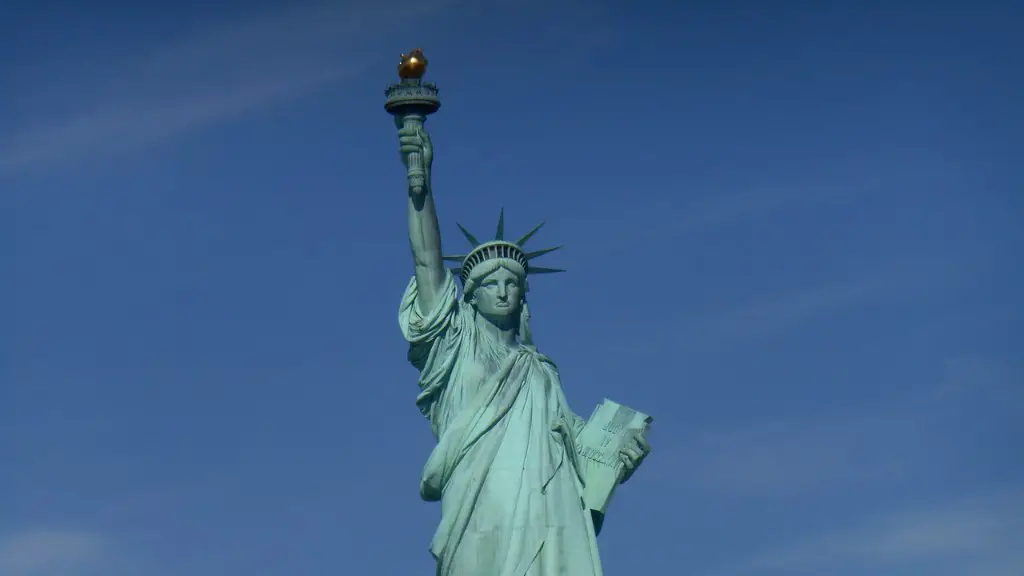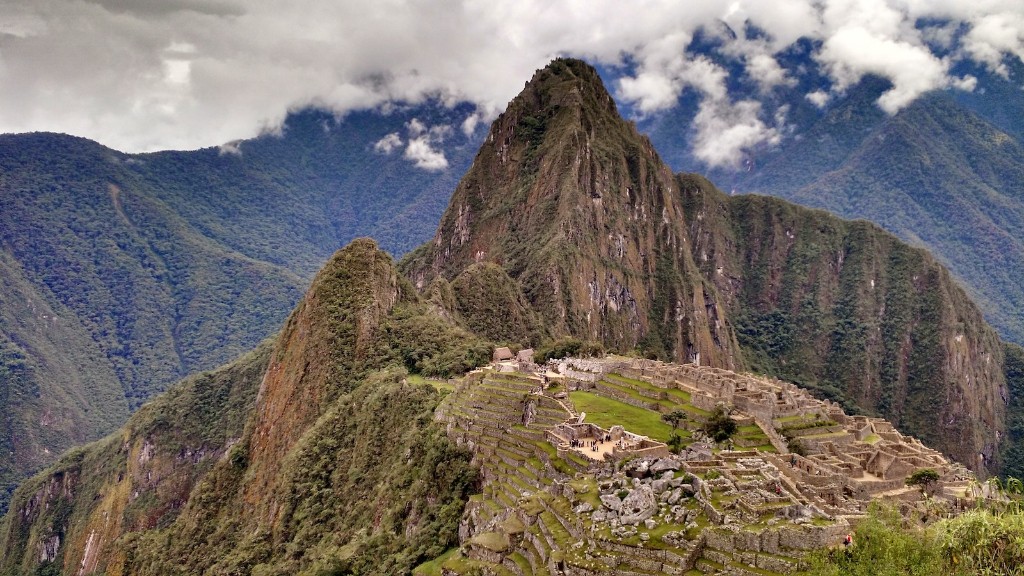For centuries, the Forbidden City has been an iconic landmark in Chinese history. Dating back to the 15th century, the Forbidden City is located in the heart of Beijing and was once the home to two powerful dynasties, the Ming and the Qing. In 1987 the Forbidden City was officially recognized as a UNESCO World Heritage Site, signaling the importance of the landmark. But just when was the Forbidden City built?
The Forbidden City was originally constructed in Beijing between 1406 and 1420, during the reign of Emperor Yongle. In addition to the Forbidden City, Emperor Yongle also constructed the grand northern capital of Beijing, known as the Thirteen Ming Tombs. The construction of the Forbidden City was a massive undertaking that took almost a decade to complete. The process of building the Forbidden City began with the demolition and reconstruction of different sections to form the city’s layout. A team of a million workers and artisans worked for day and night to complete the palace in the Ming Dynasty era.
The Forbidden City was built to serve as an imperial palace and was home to the Chinese imperial court. During this time, the complex was completely off-limits to the public, and only select members of the imperial court were allowed to enter. It was here that the emperor lived and worked and his family were also sheltered from any dangers from the outside world. The Forbidden City was also the site of political events and religious ceremonies, making it a powerful symbol of the Chinese Imperial court.
Dr. Songning Zhang, an archaeological specialist on the Forbidden City, comments on the magnitude of the city’s construction and its importance: “The Forbidden City is a masterpiece of traditional Chinese architecture, and the construction and design of the complex show the hard work and dedication of the people who created it. It is a true testament to Chinese civilization and is recognized by UNESCO as one of the world’s greatest achievements.”
For centuries, the Forbidden City has been a symbol of Chinese culture and history. In recent years, the Forbidden City has become a popular tourist attraction, with millions of people flocking to it each year. What was once a private palace, then a political and religious center, is now a collection of symbols and historical artifacts for tourists to explore and commemorate. Despite its many changes over the centuries, the Forbidden City remains one of the greatest archaeological discoveries of the world and a legacy of ancient Chinese culture.
Size and Layout of the Forbidden City
The Forbidden City covers an area of over 180 acres and is composed of 980 buildings. It consists of three main courtyards, with the inner courtyard being the most important. It is within this inner courtyard that the emperor would live and hold court. It is also here that the imperial palace and gardens can found. The other two courtyards were used to house the emperor’s concubines and court officials.
The Forbidden City was divided into two main sections, the Outer City and the Inner City. The Outer City was home to the emperor’s bodyguards, as well as to the court officials, while the Inner City was the emperor’s private residence. The Outer City was surrounded by a 10-meter-high wall, while the inner city was surrounded by an 8-meter-high wall. A wide moat surrounded both the outer and inner cities, providing an additional level of protection from any outside attack.
Overall, the layout of the Forbidden City reflects a well-thought-out scheme that was designed for a number of purposes. Not only was it meant to provide protection for the emperor and his family, but also to symbolize the emperor’s power and influence. The intricate layout of the Forbidden City also reflects a keen understanding of Chinese principles of geomancy and feng shui, a belief that objects and layouts can be arranged in a way to enhance an environment’s positive energy.
Restoration of the Forbidden City
The Forbidden City has been fully restored and preserved over the centuries. After the fall of the Qing dynasty in the early 20th century, the Forbidden City was declared a museum. Since then, it has undergone numerous repairs and renovations and new sections have been added. One of the most recent efforts includes the restoration of the Imperial Garden, which was completed in 2008.
The restoration of the Forbidden City is ongoing, with the goal of restoring it to its original grandeur. To that end, teams of historians, archaeologists and craftsmen work tirelessly to identify, restore and preserve the many artifacts, buildings and monuments found in the complex. Recent efforts have focused on the restoration of the murals and frescoes, the repair of the golden roofs, the restoration of the vast palace gardens and the conservation of the many sculptures and monuments that are spread throughout the Forbidden City.
The restoration of the Forbidden City is not only for aesthetic purposes, but also for historical purposes. According to Dr. Peng Tao, professor of archaeology at Peking University: “The restoration of the Forbidden City helps us to better understand the history of China and to preserve the legacy of the Ming and Qing Dynasties. By restoring the Forbidden City we can continue to learn more about those dynasties and how they lived and ruled.”
Architecture of the Forbidden City
The architecture of the Forbidden City is a marvel to behold. The complex contains numerous courtyards, temples and buildings, all of which are decorated with intricate designs and elaborate artwork. The style of architecture is known as “classic Chinese imperial” and it is characterized by the use of vivid colors and symmetrical patterns. The buildings of the Forbidden City are also home to exquisitely crafted sculptures, murals and frescoes.
The most iconic architectural feature of the Forbidden City is the impressive golden roofs, which are adorned with intricate designs and symbols. These roofs are believed to be symbols of power and wealth, and even today they continue to be a source of wonder and awe.
The Forbidden City also contains the impressive Hall of Supreme Harmony, which was once used as an audience hall and is still regarded as one of the finest examples of Chinese imperial architecture. This hall was built to demonstrate the power of the emperor and features intricate designs, statues and large sculptures.
The Forbidden City also contains the lovely imperial gardens, which are filled with numerous sculptures and plants. These gardens were designed to be a symbol of peace and tranquility, and today they remain a source of beauty and calm in the bustling city of Beijing.
Legacy of the Forbidden City
Today, the Forbidden City continues to stand as a testament to China’s rich history and culture. The impressive architecture of the Forbidden City is recognized by many, and it is considered one of the greatest examples of Chinese imperial grandeur. The site continues to draw millions of visitors every year, who come to marvel at the complex’s beauty, learn about its history and pay reverence to its legacy.
The Forbidden City is a source of great pride for the Chinese people and is a reminder of their rich history and culture. It stands as a symbol of power, majesty and greatness, and continues to be one of the most revered and respected archaeological sites in the world.
Cultural Significance of the Forbidden City
The Forbidden City has become a powerful symbol of Chinese culture and is a source of great pride for the Chinese people. Throughout the centuries, the Forbidden City has been home to some of the most powerful rulers in Chinese history. It is also a prime example of Chinese architecture and art, and a symbol of the grandeur of the Chinese Imperial court.
The Forbidden City also conveys many important messages about the power and influence of the Chinese Emperor. Most notably, it is a reminder of the immense wealth and power of the emperor and his court. But it is also a reminder of the importance of loyalty and obedience, as the Forbidden City was once completely taboo and off-limits to the public.
The Forbidden City is also a symbol of Chinese culture and heritage. Its many intricate designs and artwork reflect centuries of Chinese history and traditions and provide insight into the values and beliefs of the Chinese people. As such, it continues to be a popular tourist destination and a powerful symbol of China’s age-old culture.
Influence of the Forbidden City
The Forbidden City has had a profound influence on Chinese culture and architecture. Its Grand Palace and Hall of Supreme Harmony served as the model for many other imperial palaces, and the complex’s intricate designs and artwork continue to influence Chinese artists and architects today. The Forbidden City has also been featured in many movies and books, most notably in the popular novel, The Soong Sisters, which tells the story of the turbulent lives of the three iconic sisters.
The Forbidden City has also been at the center of many important political events and landmark decisions. In the 19th century, the emperor issued a decree forbidding the trading of opium by foreign powers, which effectively ended the Chinese opium trade. In addition, the last emperor of the Qing dynasty famously abdicated his throne in the Forbidden City, thus ending two centuries of imperial rule in China.
The Forbidden City was also instrumental in the formation of the People’s Republic of China in 1949. In the same year Mao Zedong declared the establishment of the People’s Republic of China in the Forbidden City’s Gate of Heavenly Peace, thereby signifying the beginning of a new era in Chinese history.
Conclusion
The Forbidden City is without a doubt one of the most iconic landmarks in China and one of the most impressive examples of Chinese architecture. Constructed during the 15th century and declared a UNESCO World Heritage Site in 1987, the Forbidden City continues to be an important symbol of Chinese culture and heritage. The complex has been the site of many important historical events and is a source of great pride for the Chinese people. Its influence can be found in art, architecture, politics and culture, making it an enduring symbol of Chinese civilization and power.

